#303 Gallery
Explore tagged Tumblr posts
Text

ALICJA KWADE / "BUT THE SAME: III" / 2016 I RISE AGAIN, CHANGED BUT THE SAME @ 303 GALLERY
#alicja kwade#installation#conceptual#minimalism#contemporary art#sculpture#303 gallery#i rise again changed but the same#polish-german#art#u
109 notes
·
View notes
Text

Katinka Bock - For your eyes only (S). 2016
41 notes
·
View notes
Text
@303gallery
#detail#conceptual#critic#space#manhattan#nyc#time#installation#minimal interior#gallery#NINA CANELL#303 gallery#aesthetic#modern#minimal#visual#chelsea gallery#chelsea#motion#persepctive#critic critiquing#critiquing#critical thinking#artist on tumblr#tumblr
4 notes
·
View notes
Text





For Stephen Shore’s latest exhibition, Topographies, at 303 Gallery, he has created stunning landscapes using a drone. The compositions draw you in and the details keep you transfixed.
From the gallery-
Beginning in 2020, this body of photographs was shot using a drone, resulting in sharply detailed aerial views of rural and suburban landscapes. Topographies builds upon concepts Shore has examined in his large-format landscapes from the 1970’s: pictures which uncover certain qualities intrinsic to the American vista. By employing a far-reaching, elevated perspective, Shore demonstrates how, from altitude, landforms are revealed, and conversely, how the built environment interacts with the land. In viewing these photographs, it becomes apparent that every detail of Shore’s pictures– from edge to edge, whether near or far– is as carefully considered and articulated as the next.
Shore has persistently explored new possibilities within the photographic image. Since his early practice, he has incorporated new formats and technologies, utilizing innovations as a means to achieve his own ends. Shore’s pictures seem straight forward at a glance but surprise with their ability to draw out the subtlest moments, distilling quiet sublimities from unassuming subjects.
This show closes 7/3/24.
#Stephen Shore#303 Gallery#303 Gallery NYC#Photography#Art#Art Shows#Chelsea Art Galleries#Chelsea Art Shows#Drone Photography#NYC Art Shows
0 notes
Text

20+ Must Have Holiday Mods For in The Sims 4 by LargeTayterTots
Gameplay Mods
Turn TV On by mizoreyukii Smores Options by ravasheen Let's Grow A Christmas Tree by icemunmun
Overrides
Christmas Set by strangestorytellersims Present Overhaul by apricotrush Luxe Gift Box Override by largetaytertots Snow Shovel // Rake Override by largetaytertots Holiday Tram Override by k-303
Recipes
Grand Meals by somik & severinka Festive Sugar Cookie Tray by icemunmun Gingerbread House by littlbowbub Gingerbread Cake by littlbowbub
Pose Packs
This Christmas Pose Pack by dumplinsiims
Build/Buy
Right On Track Toy Train by ravasheen The Merry Collection by lijoue The Advent Calendar by bbygyal123 The Ageless Dining Room Set by bostyny Holiday Decor Recolor by l.ovelysims Winter Holiday Decor by syboulette
CAS
Bright & Merry CAS Room by largetaytertots Family Christmas Pjs by simmerkate Christmas Collection Part 2 by jius Christmas Pajamas by boschiana The Willow Collection by sentate The Sandalwood Set by serenity Autumn City III by rusty Reindeer Antlers by bellassims Dog Christmas Sweaters by apricotrush
youtube / tiktok / twitch / patreon / gallery id: largetaytertots
532 notes
·
View notes
Text

— BARBIE, 4K SCREENCAPS.
Part One, 500 Screencaps.
Part Two, 500 Screencaps.
Part Three, 500 Screencaps.
Part Four, 303 Screencaps.
Downloadable RAR Versions, 5GB.
You can find this resource in gallery and also rar file. Like or reblog if it was useful, every interaction shows us that we should keep making screencaps for y'all ♡
#screencaps#barbie#barbie 2023#margot robbie#ryan gosling#america ferrera#issa rae#kate mckinnon#alexandra shipp#emma mackey#sharon rooney#simu liu#dua lipa#michael cera#ariana greenblatt#barbie screencaps#4k screencaps#4k movies#screencaps of movies#movies#movies screencaps#packs for download#pack of screencaps#coral#yeahps#dailyresources
191 notes
·
View notes
Text
✨COMISSIONS TO HELP AHMED AND HIS FAMILY ✨

Hello! I am opening commissions to help a Palestinian man and his family.

@lovelyjoyfulpolice is a friend I have been in contact with for some time, and it all started because he came to me asking for help in getting more attention for his campaign. Like many Palestinians, Ahmed and his family are going through many hardships and he decided to open a GFM to raise money for his needs and the needs of his 11 family members.
The campaign mainly serves to: The constant expense they have on supplies, basic things like food, clean water, things to protect them from the cold; help Ahmed and his family rebuild their home and their life; help Ahmed continue his studies. Ahmed, at the time I am writing this, unfortunately does not have his cell phone and has an injured foot due to an accident (this was reported by his brother), and donations to his campaign are very slow, so more than ever he needs help, and you can help!
I had made a post before offering icons, but since it didn't work out very well, now I won't just offer icons! You can ask me for a bust, half body and full body art depending on the amount you donate directly to Ahmed's campaign, take a look:


some things i forgot to add: I don't draw nsfw, gore, complex backgrounds, weapons, mechas and furry/animals; I have my discord on my carrd, if it's easier to communicate there.
You can definitely come and ask me for more details if you have any questions (I apologize if it takes me a while to answer, Tumblr for some reason doesn't send me notifications like it should, not to mention that I might be really busy with work).
If you need to see some examples of my art, you can check out my gallery here:
and here is the link to Ahmed's GFM!
Ahmed's campaign was vetted by @/gazavetters and his number is 303 in the gazavetter list here!
Please donate as much as you can to help this family, and of course if you can't donate anything, please share as much as you can to reach people who can donate. Thank you so much for reading this far!
#palestine fundraiser#vetted#palestine#free palestine#gaza#palestinian fundraiser#free gaza#vetted palestinian fundraisers#vetted palestine fundraiser#vetted palestine gfm#artists on tumblr#comission#comissions open#poppy playtime#poppy playtime chapter 4
15 notes
·
View notes
Text
Terrible Influence Tour: Canada & USA leg
05.11.2024, Toronto
Massey Hall
Capacity: 2 534 (we had 2 470)*
Start: 20:00
General promoter: AEG Presents
As of the afternoon 05.11.2024, tickets are still available on tickets.mhrth.com
(check reblogs for updates)

Our seating plan:



*52 Standing seats, 6 seats in Row D and 6 seats in Row E in Section 303 weren't on sale from the beginning. 2 534 - 64 = 2 470 seats.
Available tickets as of the afternoon 05.11.2024 (the show was marked as SOLD OUT till a few hours before the start; a few tickets appeared in the Gallery, and then everywhere else) (the last update right before the preshow started aka at 7pm: there are 4 tickets available on the Floor, almost all tickets showed below on the Balcony and the screenshot of the Gallery was taken at 6:55pm):



★ - restricted view
Some prices:



Screenshots from 21.08.2024 (to see the progress. i don't have any screenshots after that, and at some point in October it sold out):



very dark dots - Platinum tickets; ★ - restricted view
Screenshots from 28.06.2024 (the 1st sale day):



★ - restricted view
*52 of Standing seats, 6 seats in Row D and 6 seats in Row E in Section 303 weren't in sale from the beginning. 2 534 - 64 = 2 470 seats. Tickets were sold on tickets.mhrth.com
#ti information#terrible influence#ti.canada#tit information#<- i hate this tag#ti.toronto#official seating chart actually has 2 534 seats can you believe#it's a miracle
16 notes
·
View notes
Text
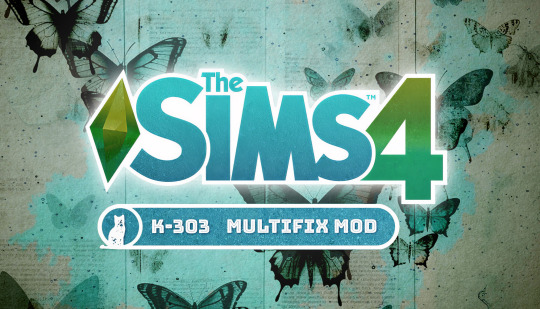
K-101 - K-303 - K-505 - NEWS - TECH & CO
So it has begun ... the K-303 is on its own road and the first objects ready to be downloaded :) Our databases seem fully repaired and we can now focus on our projects ;)
But let's talk at first about the silent update of the K-101 ... @yuroge ( thanks for the feedback ! ) noticed that after a recent patch of the Sims 4, when uploading something to the Gallery, it was claimed as cc content, even when it was cc-free, only because of the K-101 use.
We found the solution. So, better to share it :) We stripped all the translations, info files and so on from the K-101 and we kept only the DST images. This way, whatever you use, it doesn't affect your exports to the Gallery.
Now, all you have to do is to re-download the K-101 :D
DOWNLOAD HERE


As you may noticed, we added on our website a kinda sims 4 expansions fundraiser for all people who really wish the K-505 for expansions AFTER Cottage Living ... The Wedding Story is already funded at 80 % :) So, I have only one word. As soon as an expansion is funded, I work on it, before my own projects and deliver it to all. Thanks to all the volunteers. I love you for this !
And now, as we receive messages about, let's make a bit of information for Simmers who have difficulties to download ... I made some pictures to show you that every K-Mod is fully downloadable :D
on PC :
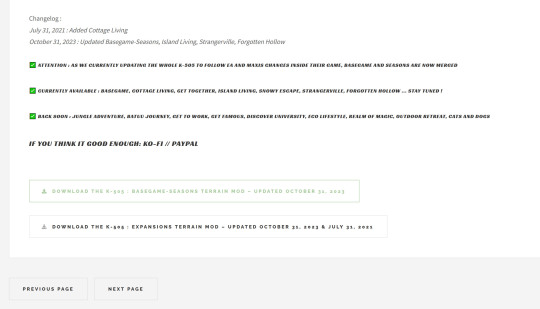
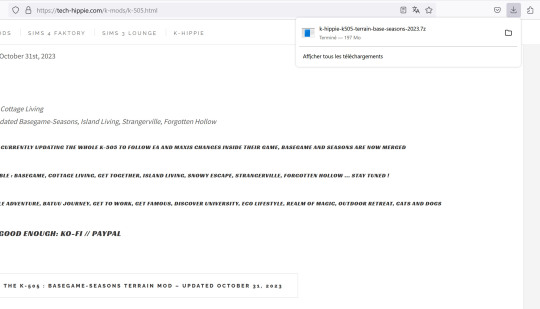




As you see, no problem at all. At first, my firewall is stated on the medium and I do not have Anti Virus except the Microsoft ones.
My browser on PC is Firefox. Then I use 7z.exe to extract : it is free, easy to use and very very safe. I extract all my files inside the download folder then I add them manually into my Mods folder.
on Mac, it is even much more easy :
Downloaded with Safari, double-click the 7z files, extracted, done.
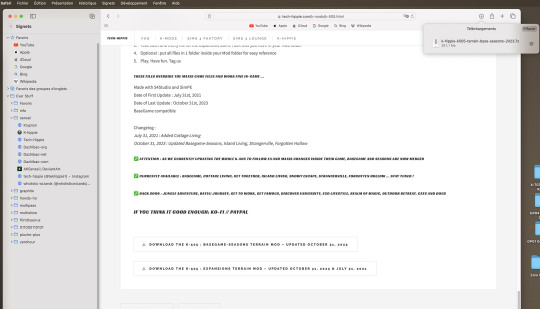


I'm not a PC guy but I'm pretty sure you may find some help and information among other Simmers.
Crinrict is an excellent website for many things Sims 4 related :) Courage to you ! I'm pretty sure you may do it ;)
That was a late Sunday afternoon post. See you soon !
#sims 4#sims 4 custom content#sims 4 download#sims 4 cc#k-hippie talk#ts4#sims 4 floors#sims 4 wysiwyg#k 101#k 303#k 505#k hippie#the sims 4#sims 4 expansions
93 notes
·
View notes
Text
The Weirwood Queen, Art Gallery 4
All art by the spectacular @ohnoitsmyra

Olyvar Sand, 300 AC

Gilly, 300 AC

Daenerys Targaryen, 300 AC

Irri, 303 AC

Sister Edythe, 303 AC

Paul the Pious, High Septon of Harrenhal, 303 AC (regalia)

Paul the Pious, High Septon of Harrenhal, 303 AC (usual garb)

The Embrace (Olyvar Sand and Sansa Stark), 304 AC
#the weirwood queen#asoiaf fanart#olyvar sand#gilly#daenerys targeryan#irri#sister edythe#paul the pious#sansa stark
40 notes
·
View notes
Text

Doug Aitken, migration (empire) (detail), 2008, single-channel video (color, sound), 24:28 minutes, film still; Carnegie Museum of Art, Pittsburgh, A.W. Mellon Acquisition Endowment Fund, 2009.11. Courtesy of the artist; 303 Gallery, New York; Galerie Eva Presenhuber, Zurich; Victoria Miro Gallery, London; and Regen Projects, Los Angeles
10 notes
·
View notes
Text
Listening Post: Kim Gordon

Kim Gordon has long been one of rock’s female icons, one of a tiny handful of women to get much play in Michael Azzerad’s underground-defining Our Band Could Be Your Life and a mainstay in the noise-rock monolith Sonic Youth. It’s hard to imagine that quintessential dude rock band without Gordon in front, dwarfed by her bass or spitting tranced out, pissed off verses over the storm of feedback.
Yet Gordon’s trajectory has been, if anything, even more fascinating since Sonic Youth’s demise in 2011. A visual artist first — she studied art at the Otis College of Art and Design before joining the band — she continues to paint and sculpt and create. She’s had solo art shows at established galleries in London and New York, most recently at the 303 Gallery in New York City. A veteran of indie films including Gus van Zant’s Last Days and Todd Haynes I’m Not There, she has also continued to act sporadically, appearing in the HBO series Girls and on an episode of Portlandia. Her memoir, Girl in a Band, came out in 2015.
But Gordon has remained surprisingly entrenched in indie music over the last decade. Many critics, including a few at Dusted, consider her Body Head, collaboration with Bill Nace the best of the post-Sonic Youth musical projects. The ensemble has now produced two EPs and three full-lengths. Gordon has also released two solo albums, which push her iconic voice into noisier, more hip hop influenced directions. We’re centering this listening post around The Collective, Gordon’s second and more recent solo effort, which comes out on Matador on March 8th, but we’ll likely also be talking about her other projects as well.
Intro by Jennifer Kelly
Jennifer Kelly: I missed No Home in 2019, so I was somewhat surprised by The Collective’s abrasive, beat-driven sound though I guess you could make connections to Sonic Youth’s Cypress Hill collaboration?
youtube
The more I listen to it, though, the more it makes sense to me. I’ve always liked the way Gordon plays with gender stereotypes, and “I’m a Man” certainly follows that trajectory. What are you guys hearing in The Collective?
Jonathan Shaw: I have only listened through the entire record once, but I am also struck by its intensities. Sort of silly to be surprised by that, given so many of the places she has taken us in the past: noisy, dangerous, dark. But there's an undercurrent of violence to these sounds that couples onto the more confrontational invocations and dramatizations of sex. It's a strong set of gestures. I like the record quite a bit.
Bill Meyer: I'm one of those who hold Body/Head to be the best effort of the post-Sonic Youth projects, but I'll also say that it's very much a band that creates a context for Gordon to do something great, not a solo effort. I was not so taken with No Home, which I played halfway through once upon its release and did not return to until we agreed to have this discussion. I've played both albums through once now, and my first impression is that No Home feels scattered in a classic post-band-breakup project fashion — “let's do a bit of this and that and see what sticks.” The Collective feels much more cohesive sonically, in a purposeful, “I'm going to do THIS” kind of way.
Jonathan Shaw: RE Jennifer's comment about “I'm a Man”: Agreed. The sonics are very noise-adjacent, reminding me of what the Body has been up to lately, or deeper underground acts like 8 Hour Animal or Kontravoid's less dancy stuff. Those acts skew masculine (though the Body has taken pains recently to problematize the semiotics of those photos of them with lots of guns and big dogs...). Gordon's voice and lyrics make things so much more explicit without ever tipping over into the didactic. And somehow her energy is in tune with the abrasive textures of the music, but still activates an ironic distance from it. In the next song, “Trophies,” I love it when she asks, “Will you go bowling with me?” The sexed-up antics that follow are simultaneously compelling and sort of funny. Rarely has bowling felt so eroticized.
Jennifer Kelly: I got interested in the beats and did a YouTube dive on some of the other music that Justin Raisen has been involved with. He's in an interesting place, working for hip hop artists (Lil Yachty, Drake), pop stars (Charli XCX) and punk or at least punk adjacent artists (Yeah Yeah Yeahs, Viagra Boys), but nothing I've found is as raw and walloping as these cuts.
“The Candy House” is apparently inspired by Jennifer Egan's The Candy House, which is about a technology that enables people to share memories... Gordon is pretty interested in phones and communications tech and how that's changing art and human interaction.
Andrew Forell: My immediate reaction to the beats was oh, The Bug and JK Flesh, in particular the MachineEPs by the former and Sewer Bait by the latter. Unsurprisingly, as Jonathan says, she sounds right at home within that kind of dirty noise but is never subsumed by it
Jennifer Kelly: I don't have a deep reference pool in electronics, but it reminded me of Shackleton and some of the first wave dub steppers. Also, a certain kind of late 1990s/early aughts underground hip hop like Cannibal Ox and Dalek.
Bryon Hayes: Yeah, I hear some Dalek in there, too. Also, the first Death Grips mixtape, Ex-Military.
It's funny, I saw the track title “I'm a Man,” and my mind immediately went to Bo Diddley for some reason, I should have known that Kim would flip the script, and do it in such a humorous way. I love how she sends up both the macho country-lovin’ bros and the sensitive metrosexual guys. It's brilliant!
This has me thinking about “Kool Thing”, and how Chuck D acts as the ‘hype man’ to Kim Gordon in that song. I'm pretty sure that was unusual for hip hop at the time. Kim's got a long history of messing with gender stereotypes.
youtube
Bill Meyer: Gordon did a couple videos for this record, and she starred her daughter Coco in both of them. The one for “I'm A Man” teases out elements of gender fluidity, how that might be expressed through clothing, and different kinds of watching. I found the video for “Bye Bye” more interesting. All the merchandise that's listed in the video turns out to be a survival kit, one that I imagine that Gordon would know that she has to have to get by. The protagonist of the video doesn't know that, and their unspoken moment in a car before Coco runs again was poignant in a way that I don't associate with her work. And of messing with hip hop!
youtube
Tim Clarke: “Bye Bye” feels like a companion to The Fall’s “Dr Buck’s Letter.”
youtube
Bill Meyer: From The Unutterable? I'll have to a-b them.
Tim Clarke: That’s the one.
Jonathan Shaw: All of these comments make me think of the record’s title, and the repeated line in “The Candy House”: “I want to join the collective.” Which one? The phone on the record’s cover nods toward our various digital collectives — spaces for communication and expression, and spaces for commerce, all of which seem to be harder and harder to tell apart. A candy house, indeed. Why is it pink? Does she have a feminine collective in mind? A feminine collective unconscious? The various voices and lyric modes on the record suggest that's a possibility. For certain women, and for certain men working hard to understand women, Gordon has been a key member of that collective for decades.
Jennifer Kelly: The title is also the title of a painting from her last show in New York.
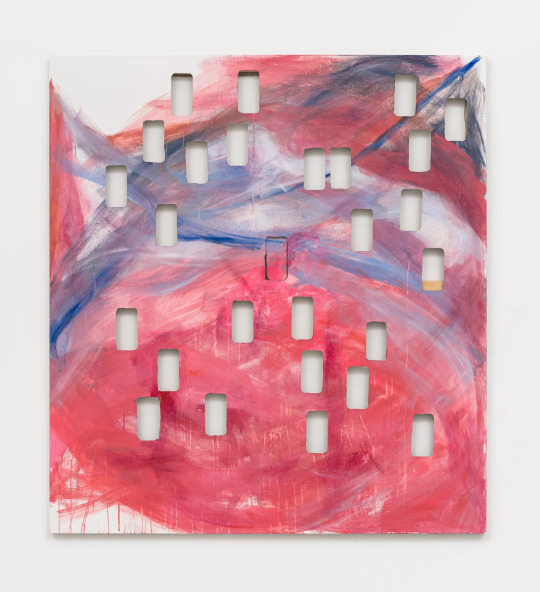
The holes are cell phone sized.
You can read about the show here, but here's a representative quote: “The iPhone promises freedom, and control over communication,” she says. “It’s an outlet of self-expression, and an escape and a distraction from the bigger picture of what’s going on in the world. It’s also useful for making paintings.”
Gordon is a woman, and a woman over 70 at that — by any measure an underrepresented perspective in popular culture. However, I’d caution against reading The Collective solely as a feminist statement. “I'm a Man,” for instance, is told from the perspective of an incel male, an act of storytelling and empathy not propaganda. My sense is that Gordon is pretty sick of being asked, “What's it like to be a girl in a band?” (per “Sacred Trickster”) and would like, maybe, to be considered as an artist.
It's partly a generational thing. I'm a little younger than she is, but we both grew up in the patriarchy and mostly encountered gender as an external restriction.
As an aside, one of my proudest moments was when Lucas Jensen interviewed me about what it was like to be a freelance music writer, anonymously, and Robert Christgau wrote an elaborate critique of the piece that absolutely assumed I was a guy. If you're not on a date or getting married or booking reproductive care, whose business is it what gender you are?
There, that's a can of worms, isn't it?
Jonathan Shaw: Feminine isn't feminist. I haven't listened nearly closely enough to the record to hazard an opinion about that. More important, it seems to me the masculine must be in the feminine unconsciousness, and the other way around, too. Precisely because femininity has been used as a political weapon, it needs imagining in artistic spaces. Guess I also think those terms more discursively than otherwise: there are male authors who have demonstrated enormous facility with representing femininity. James, Joyce, Kleist, and so on. Gordon has always spoken and sung in ways that transcend a second-wave sort of feminine essence. “Shaking Hell,” “PCH,” the way she sings “I Wanna Be Your Dog.”
youtube
Jennifer Kelly: Sure, she has always been shape-shifter artistically.
The lyrics are super interesting, but almost obliterated by noise. I’m seeing a connection to our hyperconnected digital society where everything is said but it’s hard to listen and focus.
Bill Meyer: Concrete guy that I am, I’ve found myself wishing I had a lyric sheet even though her voice is typically the loudest instrument in the mix.
Andrew Forell: Yes, that sense of being subsumed in the white noise of (dis)information and opinion feels like the utopian ideal of democratizing access has become a cause and conduit of alienation in which the notion of authentic voices has been rendered moot. It feels integral to the album as a metaphor
Christian Carey: How much of the blurring of vocals (good lyrics — mind you) might involve Kim’s personal biography, I wonder? From her memoirs, we know how much she wished for a deflection of a number of things, most having to do with Thurston and the disbandment of SY.
Thurston was interviewed recently and said that he felt SY would regroup and be able to be professional about things. He remarked that it better be soon: SY at eighty wouldn’t be a good look!
Andrew Forell: And therein lies something essential about why that could never happen
Ian Mathers: I know I’m far in the minority here (and elsewhere) because I’ve just never found Sonic Youth that compelling, despite several attempts over the years to give them another chance. And for specifically finding Thurston Moore to be an annoying vocal presence (long before I knew anything about his personal life, for what it's worth). So, I’m in no hurry to see them reunite, although I do think it would be both funny and good if everyone except Moore got back together.
Having not kept up with Gordon much post-SY beyond reading and enjoying her book, I wasn’t sure what to expect from this record. After a couple of listens, I’m almost surprised how much I like it. Even though I’m lukewarm on SY’s music, she’s always been a commanding vocal presence and lyricist and that hasn’t changed here (I can echo all the praise for “I’m a Man,” and also “I was supposed to save you/but you got a job” is so bathetically funny) and I like the noisier, thornier backing she has here. I also think the parts where the record gets a bit more sparse (“Shelf Warmer”) or diffuse (“Psychic Orgasm”) still work. I've enjoyed seeing all the comparisons here, none of which I thought of myself and all of which makes sense to me. But the record that popped into my head as I listened was Dead Rider’s Chills on Glass. Similar beat focus, “thick”/distorted/noisy/smeared production, declamatory vocals. I like that record a lot, so it's not too surprising I'm digging this one.
youtube
Jennifer Kelly: I loved Sonic Youth but have zero appetite for the kind of nostalgia trip, just the hits reunion tour that getting back together would entail.
Jonathan Shaw: Yeah, no thanks to that.
RE Christian's comment: Not sure I see deflection so much as the impossibility of integration. We are all many, many selves, always have been. Digital communications interfaces and social media have just lifted it to another level of experience. Gordon sez, “I don't miss my mind.” Not so much a question of missing it in the emotional/longing sense, more so acknowledging that phrases like “my mind” have always been meaningless. Now we partition experience and identity into all of these different places, and we sign those pieces of ourselves over, to Zuck and the algorithms. We know it. We do it anyways, because it's the candy house, full of sweets and pleasures that aren't so good for us, but are really hard to resist. “Come on, sweets, take my hand...”
Bill Meyer: I would not mind hearing all of those SY songs I like again, can’t lie, although I don’t think that I’d spend Love Earth Tour prices to hear them. But given the water that has passed under the bridge personally, and the length of time since anyone in the band has collaborated creatively (as opposed to managing the ongoing business of Sonic Youth, which seems to be going pretty well), a SY reunion could only be a professionally presented piece of entertainment made by people who have agreed to put aside their personal differences and pause their artistic advancement in order to make some coin. There may be good reasons to prioritize finances. Maybe Thurston and/or Kim wants to make sure that they don’t show up on Coco’s front door, demanding to move their record or art collection into her basement, in their dotage. And Lee’s a man in his late 60s with progeny who are of an age to likely have substantial student loan debt. But The Community is just the kind of thing they’d have to pause. It feels like the work of someone who is still curious, questioning, commenting. It's not just trying to do the right commercial thing.
Justin Cober-Lake: I’m finding this one to be a sort of statement album. I’d stop short of calling it a concept album, but there seems to be a thematic center. I think a key element of the album is the way that it looks for... if not signal and noise, at least a sense of order and comprehensibility in a chaotic world. Gordon isn’t even passing judgment on the world — phones are bad, phones are good, phones make art, etc. But there’s a sense that our world is increasingly brutal, and we hear that not just in the guitars, but in the beats, and the production. “BYE BYE” really introduces the concept. Gordon’s leaving (and we can imagine this is autobiographical), but she’s organizing everything she needs for a new life. “Cigarettes for Keller” is a heartbreaking line, but she moves on, everything that makes up a life neatly ordered next to each other, iBook and medications in the same line. It reminds me of a Hemingway character locking into the moment to find some semblance of control in the chaos.
Getting back to gender, there’s a funny line at the end: one of the last things she packs is a vibrator. I'm not sure if we're to read this as a joke, a comment on the necessity of sexuality in a life full of transitory moments, as a foreshadowing of the concepts we’ve discussed, or something else. The next item (if it’s something different) is a teaser, which could be a hair care product or something sexual (playing off — or with — the vibrator). Everything's called into question: the seriousness of the track, the gender/sexuality ideas, what really matters in life. Modern gadgets, life-sustaining medicines, and sex toys all get equal rank. That tension really adds force to the song.
Coming out of “BYE BYE,” it's easy to see a disordered world that sounds extremely noisy, but still has elements we can comprehend within the noise. I don’t want to read the album reductively and I don't think it's all about this idea, but it's something that, early on in my listening, I find to be a compelling aspect of it.
youtube
#dusted magazine#listeningpost#kim gordon#the collective#jennifer kelly#jonathan shaw#bill meyer#andrew forell#bryon hayes#tim clarke#christian carey#ian mathers#justin cober-lake
23 notes
·
View notes
Text
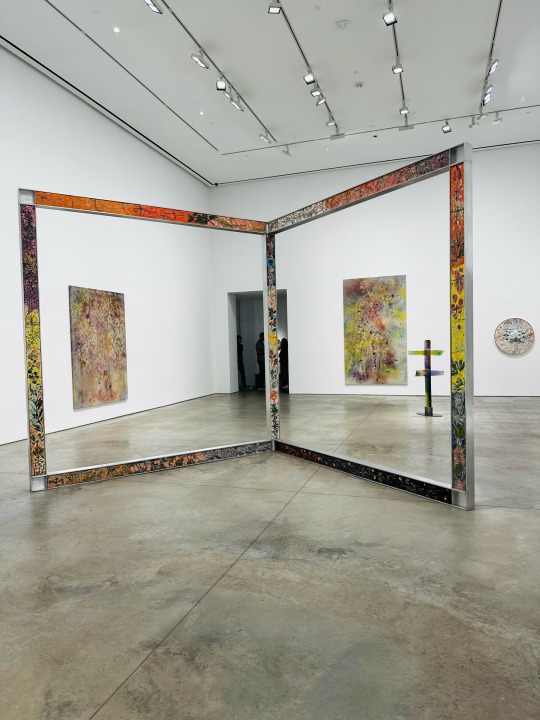
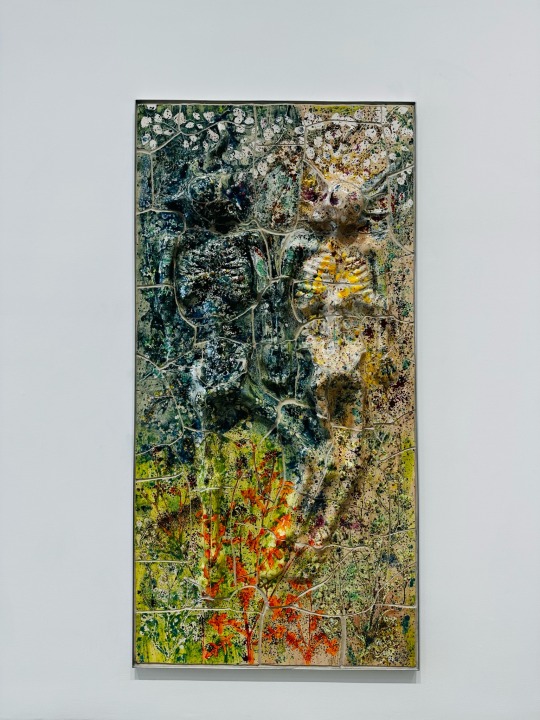
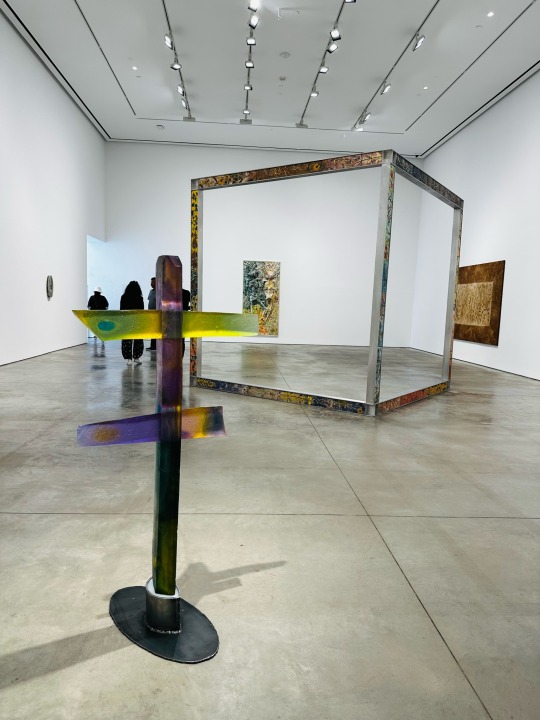
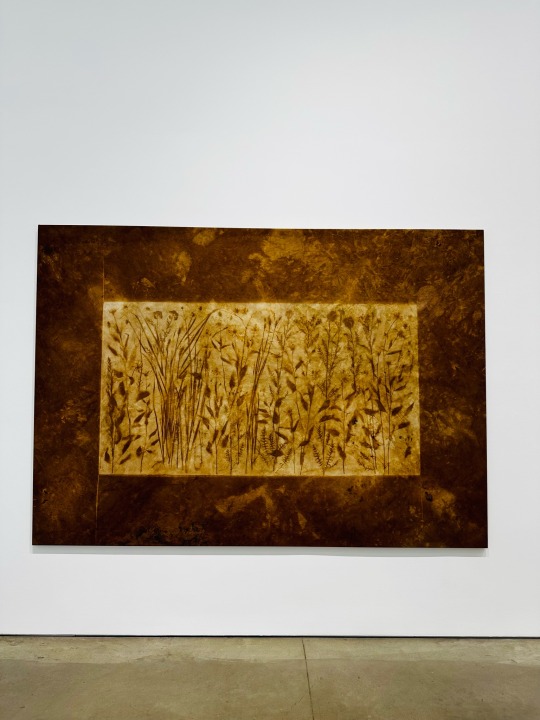
@303gallery
#installation#conceptual#nyc#space#detail#manhattan#minimal interior#time#critic#gallery#303 gallery#art#Artist#Chelsea#interior design#design#persepctive#visual#artist on tumblr#iphonography#photography#critic critiquing#critiquing
3 notes
·
View notes
Text
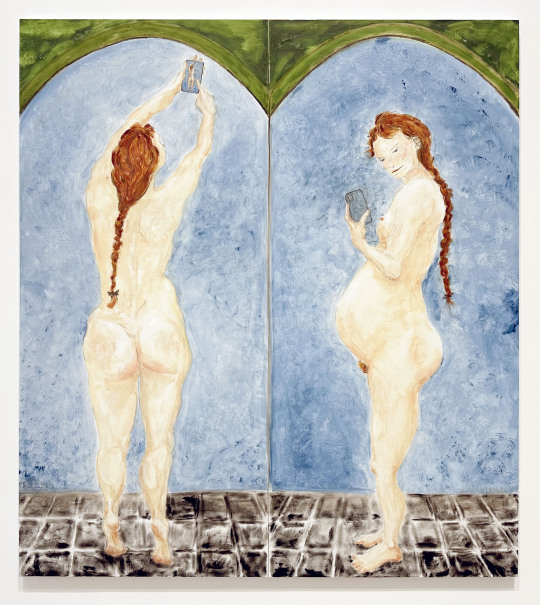
“New body, new body”, 2024, Oil and graphite on linen

“Our family portrait/ Dancing over the town”, 2024, Oil and graphite on linen
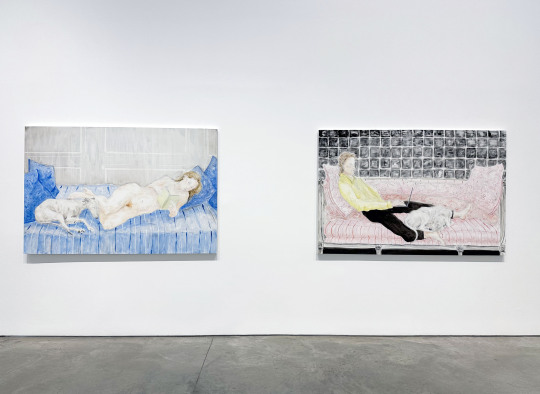
“In Bed” 2024, and “The world was different when Leonard painted Emily”, 2024, Oil and graphite on linen
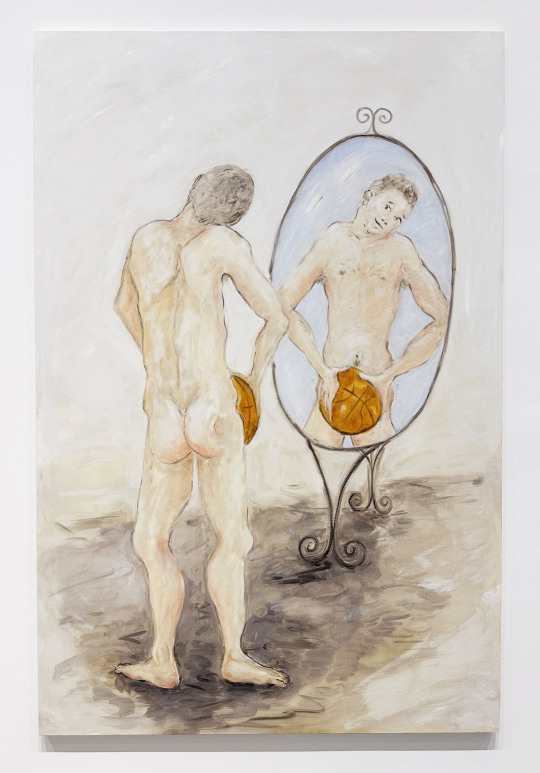
“I love basketball”, 2024, Oil and graphite on linen
Tanya Merrill’s exhibition, Watching women give birth on the internet and other ways of looking, at 303 Gallery explores the way we look at the world today, while referencing classical imagery from the past. What has changed in the way we see ourselves, our place in society, and our place in time? How much has changed because of self documentation and the internet? All of these questions feel even more prevalent now with technology and environmental issues moving at an accelerated pace.
From the press release-
True to her propensity for a cyclical and narrative installation, the show begins and ends with the creation of life. Each painting represents a diverse point of interest and concern to the artist— sexuality and ideas of fertility, the natural world and the fraught state of the environment, and the broader implications of contemporary technology, sports, and religion on the artist’s experience as a woman today.
The scale of the subjects in each canvas approximate life, creating a one-to-one perspective when standing in front of, say, a tree trunk, a cat perched on a fish tank, or a man admiring himself with a basketball. One work shows a trompe l’oeil stack of papers illustrating a 15th century manuscript: an early representation of a woman’s fertility cycle in relation to the stars. The modes for distributing images have changed, but the need to see them has not—jump ahead 800 years and the show’s namesake painting frames the edge of a computer screen, documenting the recent phenomenon of sharing one’s birthing story and corresponding photographs publicly on the internet.
Humans have always employed tools for looking. The earliest manufactured mirrors were made from volcanic glass in Turkey and date some 8000 years ago, the invention of the telescope advanced our understanding of Earth’s place in the cosmos, a phone now captures our own image with a recent poll finding 92 million selfies are taken every day around the world: the Allegory of Sight and mythology of Narcissus regenerates. In I love basketball, a naked man gazes affectionately at himself in the mirror. Coyly, he holds a basketball in front of his own genitalia; pensive yet playful, he engages the long tradition of masculinity in sports seen throughout art history. Across the gallery, a pregnant woman is doubled in the frame and photographs her changing body. The technology she clutches, perhaps soon to be obsolete, will be inextricably linked to the start of the 21st century.
The North American cecropia moth is seen on its host plant, a white birch tree, one of the few plants a Cecropia larva can eat. A recent report found dramatic rates of decline that may lead to the extinction of 40% of the world’s insect species over the next few decades. And with a single nest of baby birds needing up to 9,000 caterpillars before they are ready to fledge, the looming demise and precarity of our food chain is blatant. Merrill is compelled to paint the species that are still here, a record that they really did live before they died. The ecologist David Wagner says of the insect decline, “… We don’t know if it’s an apocalypse or Armageddon.”
In Our family portrait/ Dancing over the town, three skeletons– two human and one dog– are seen romping joyfully, even in death. The couple, winged and facing eternity together, point to religious imagery from a 17th century wall tomb, while the surrounding landscape references the art movements of Europe which inspired the Hudson River School Painters— an homage to the place this exhibition was made. Merrill’s studio in the Hudson Valley can be seen nestled in the bottom left corner of the canvas.
This exhibition closes 5/18/24.
#Tanya Merrill#303 Gallery#303 Gallery NYC#Art#Art Shows#Chelsea Art Galleries#Chelsea Art Shows#Fertility#Life and Death#New York Art Shows#NYC Art Shows#Painting#Selfies#Technology
1 note
·
View note
Text
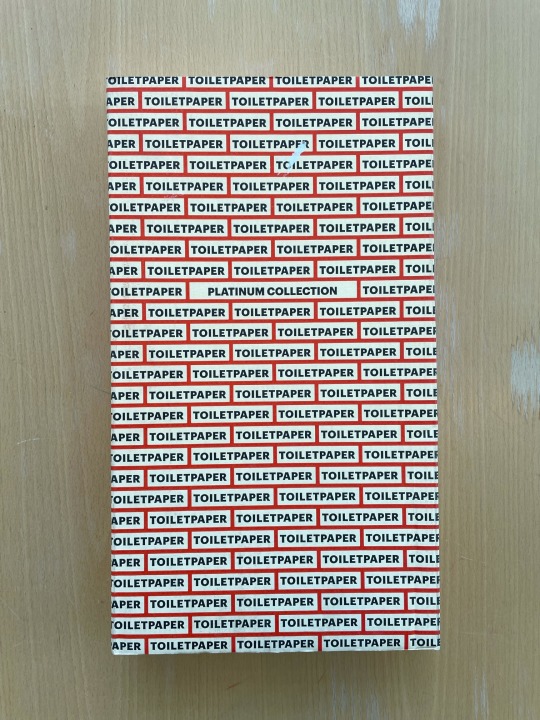
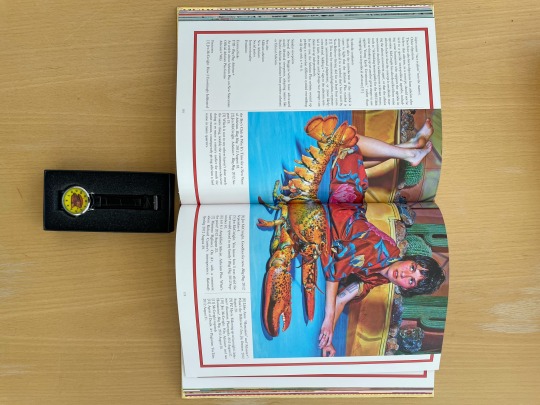


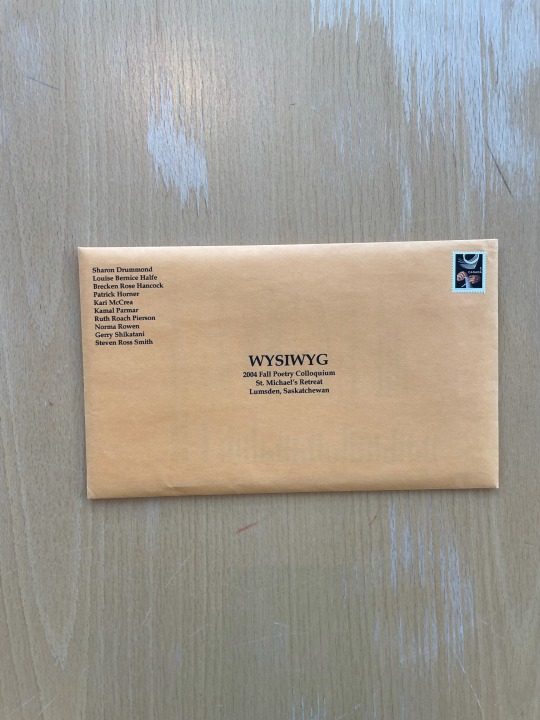
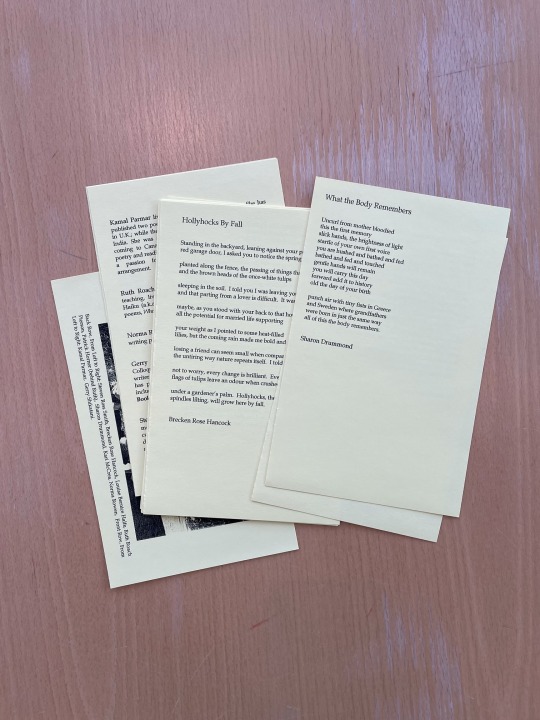
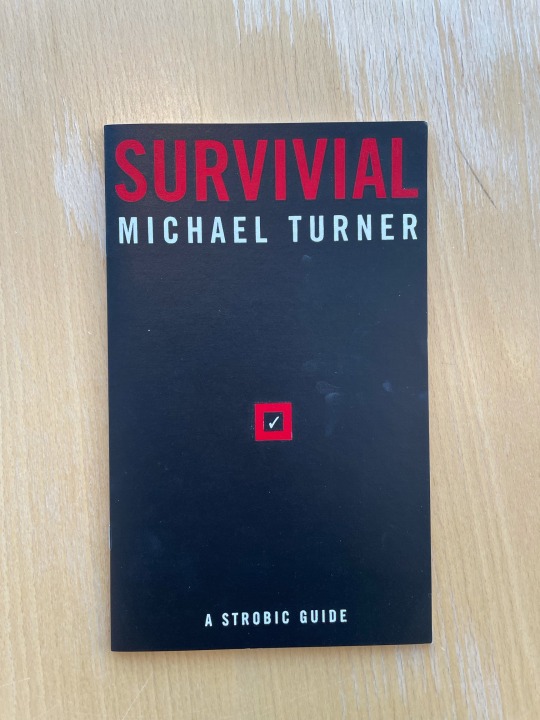
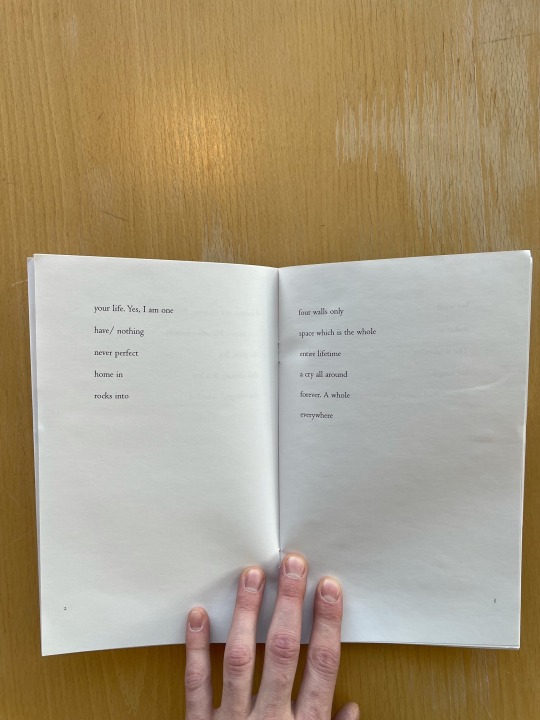
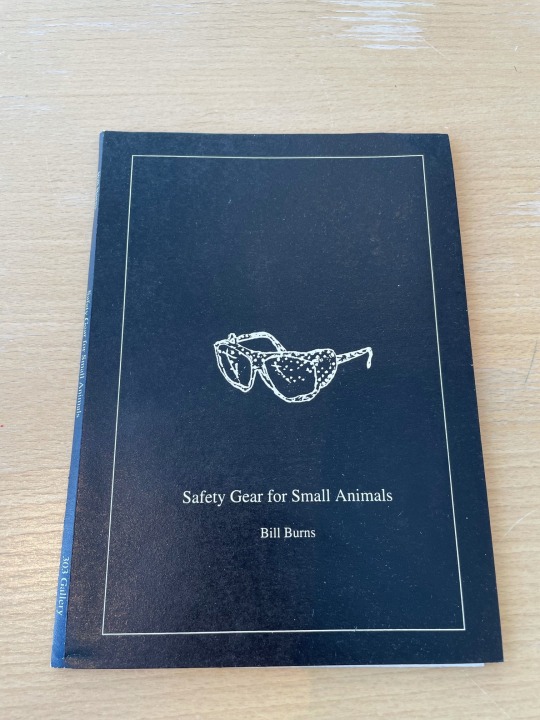

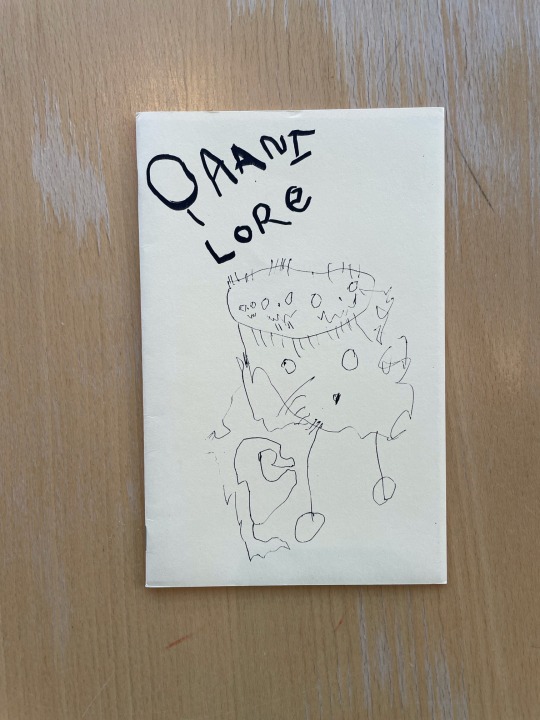
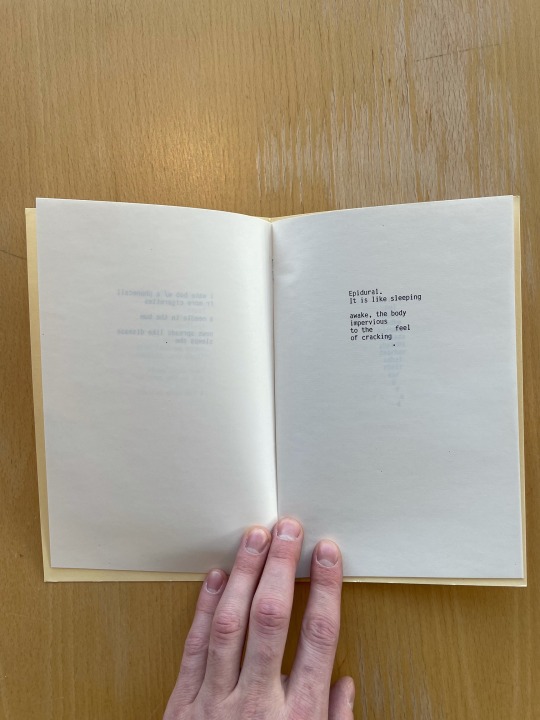


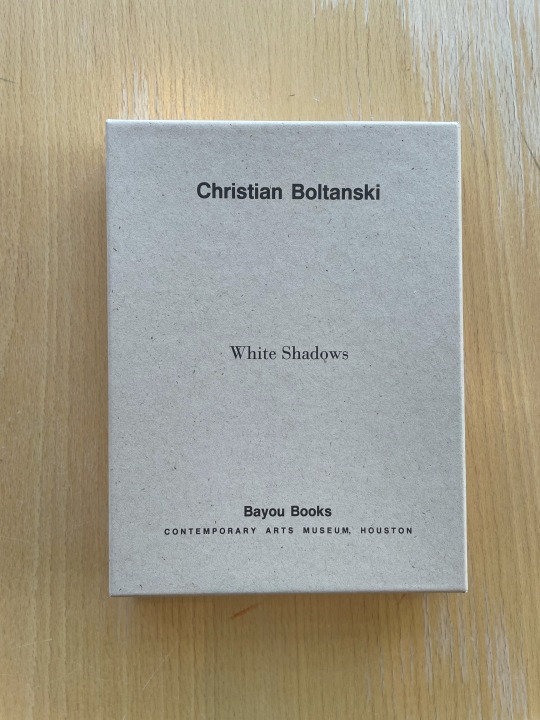

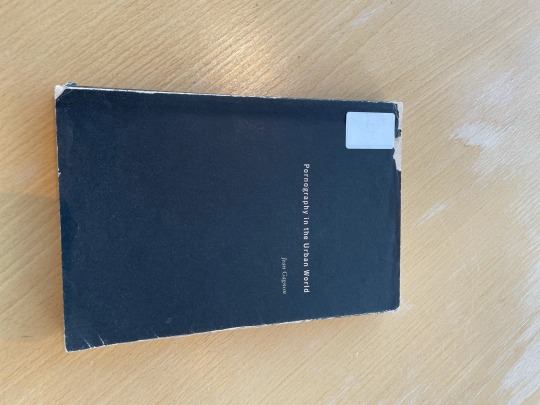

Artist Book Display for November 2023. Toiletpaper Volume II: Platinum Collection. Maurizio Cattelan & Pierpaolo Ferrari. Bologna, ITA: Damiani Editore. 2015. Sculls' Angles : A Novel. Michael Miranda. Toronto, ON: Parasitic Ventures Press. 2015.
WYSIWYG: 2004 fall Poetry Colloquium. Regina, SK: Sage Hill Chapbooks. 2004.
Survival: A Strobic Guide. Michael Turner. Vancouver, BC: Canlit Classics in Transition. 1997.
Safety Gear for Small Animals. Bill Burns. New York, NY: 303 Gallery. 1994.
Qaani Lore. J.W. Curry. Toronto, ON: Unfinished Monument Press. 1985.
The Page-Turner's Sister. Jean McKay. Stratford, ON: Trout Lily Press. 1999.
White Shadows. Christian Boltanski. Houston, TX: Bayou Books. 1992.
Pornography in the Urban World. Jean Gagnon; translated by James Boake & Jeanluc Svoboda. Toronto, ON: Art Metropole. 1986.
24 notes
·
View notes
Text

Courtyard Lane 303, Willow Creek Gallery information under the cut.






Meet the residents.

Lot title: Pique Hearth Lot type: Residential Size: 30x20 Price: §94,638 Original creator: sixamart / @futurelabs Packs used: High School Years, Cottage Living, Snowy Escape, Eco Lifestyle, Discover University, Island Living, Get Famous, Seasons, Cats & Dogs, City Living, Get Together, Get to Work, Werewolves, My Wedding Stories, Dream Home Decorator, StrangerVille, Jungle Adventure, Parenthood, Vampires, Dine Out, Spa Day, Paranormal, Nifty Knitting, Tiny Living, Moschino, My First Pet, Laundry Day, Toddler, Vintage Glamour, Backyard, Kids Room, Movie Hangout, Cool Kitchen, Perfect Patio.
4 notes
·
View notes